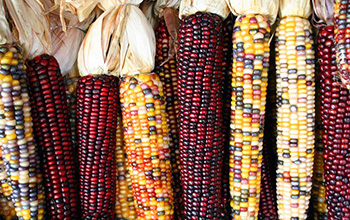Migrants from south carrying maize were early Maya ancestors
Previously unknown migratory movement brought knowledge of maize agriculture

April 20, 2022
A site in Belize has been critical to studying the origins of the ancient Maya people and the spread of maize as a staple food, according to research published in Nature Communications by an interdisciplinary team of scientists.
Excavations in Belize, along with ancient DNA analyses, indicate a previously unknown migration of people who carried maize, or corn, from an area of South America to north of the Maya region. The research was supported by the U.S. National Science Foundation.
Scientists excavated 25 burials dating 10,000 to 3,700 years ago from two cave or rock shelter sites in the remote Maya Mountains. The sites are located beneath the overhangs of limestone cliffs that once sheltered people living below and protected the everyday debris and burials of the dead for more than 7,000 years.
The excavated skeletons revealed ancient DNA information on the movements of early populations in the Americas. A southward migration of people from the north some 9,600 to 7,300 years ago shows only distant relatedness to present-day Mesoamericans, including Mayan-speaking populations.
More:
https://www.nsf.gov/discoveries/disc_summ.jsp?WT.mc_id=USNSF_1&cntn_id=304949
